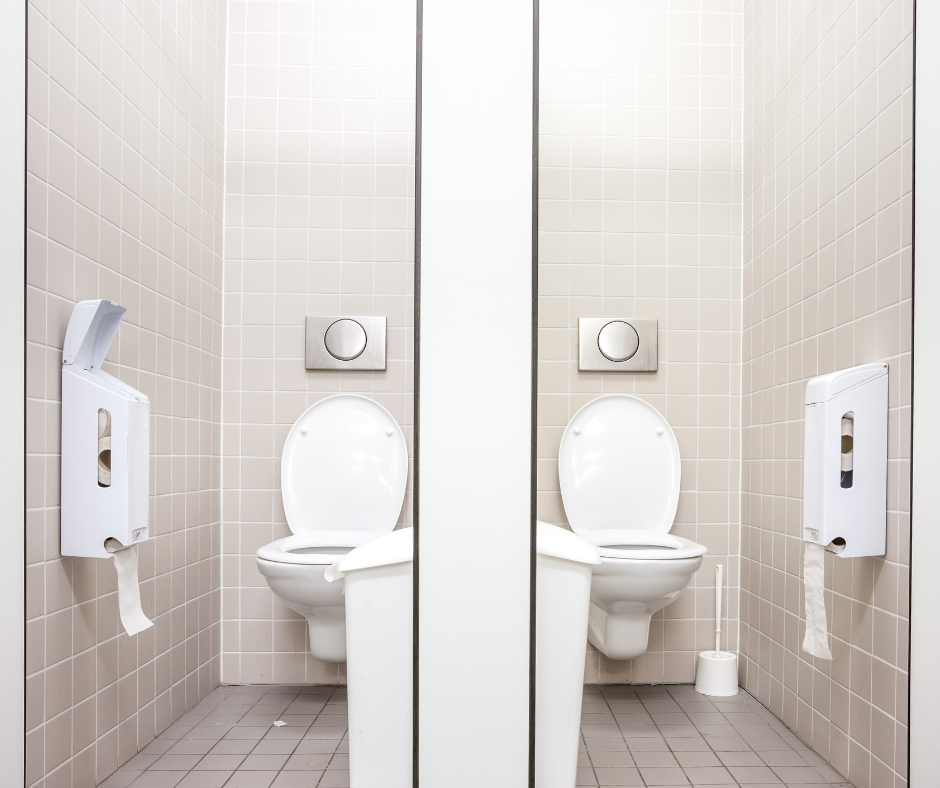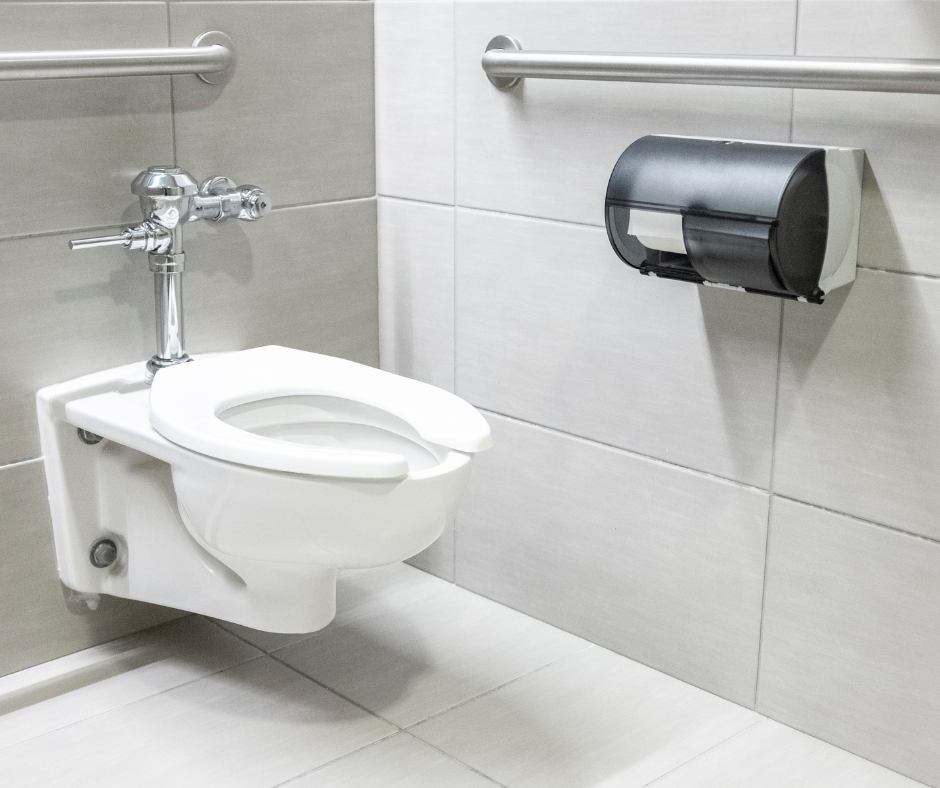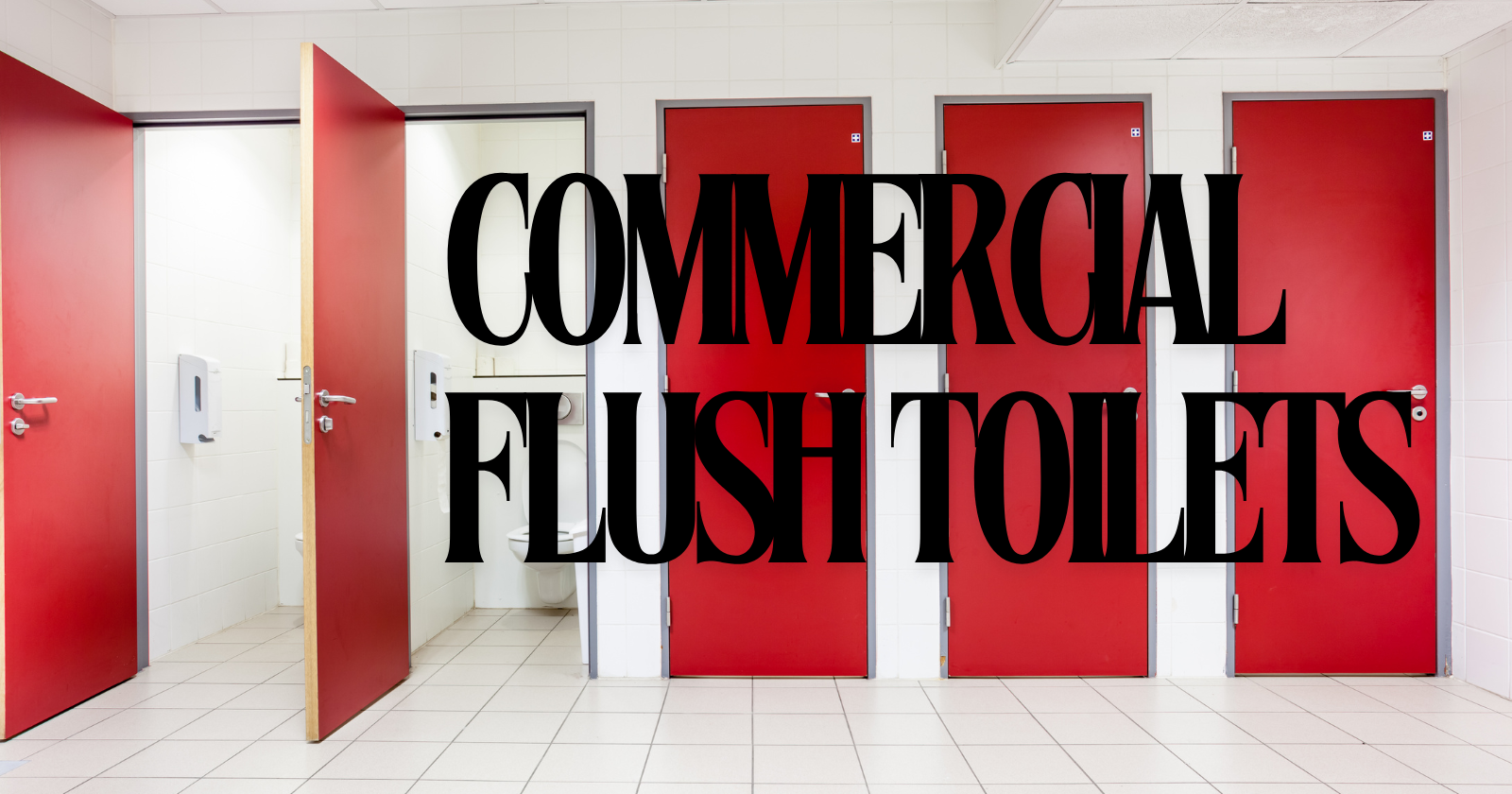Commercial Flush Toilets
Commercial flush toilets are essential fixtures in public restrooms, offices, and other high-traffic areas. These sturdy devices are built for frequent use while maintaining cleanliness and efficiency.
Water-efficient commercial toilets can save businesses money and reduce environmental impact. They use as little as 1.1 gallons per flush.
When choosing a commercial toilet, consider durability, water usage, and ease of maintenance. Many top brands offer a range of styles and installation types to fit different spaces and needs.
From wall-mounted models to floor-standing units, there’s a commercial toilet solution for every setting.
Investing in quality commercial toilets can lead to long-term savings. By selecting water-efficient models and those designed for heavy use, you can lower utility costs and minimize the need for repairs.
Check local regulations and accessibility requirements when installing commercial toilets in public spaces.
Key Takeaways
- Commercial toilets are designed for durability and frequent use in public spaces.
- Water-efficient models can significantly reduce water consumption and costs.
- Choosing the right toilet type and brand can improve long-term savings and compliance.

Design and Types of Commercial Flush Toilets
Commercial Flush Toilets come in different designs to suit various needs. You’ll find options for floor or wall mounting and different flushing mechanisms. These choices affect installation, maintenance, and water use.
Floor-Mounted versus Wall-Hung Models
Floor-mounted toilets sit directly on the bathroom floor. You’ll see these often in public restrooms. They’re sturdy and easy to install. Some have a visible tank, while others hide it in the wall.
Wall-hung toilets are mounted to the wall instead of the floor. You’ll like these for their sleek look, easy cleaning underneath, and space-saving benefits. However, they need strong wall support and cost more to install.
Both types come in different heights. You can pick standard or ADA-compliant models for accessibility.
Flushometer Toilets and Their Operation
Flushometer toilets don’t have tanks. They’re found in many busy public bathrooms. They connect straight to the water supply and use pressure for flushing.
Here’s how they work:
- A flush valve opens when you push the handle
- Water rushes in to clean the bowl
- The valve closes automatically
Pros of flushometer toilets:
- Fast, powerful flush
- Quick refill for back-to-back use
- Save space without a tank
You can choose manual or touchless flush valves. Some models use as little as 1.1 gallons per flush, saving water. However, they need good water pressure to work well.

Key Features of Commercial Flush Toilets
Commercial Flush Toilets have special traits that set them apart from regular home toilets. They need to handle heavy use, stay clean, and save water.
Durability and Dependability
Commercial toilets are built tough. They use strong materials that don’t break easily; many have metal parts instead of plastic. This helps them last for years, even with many people using them daily.
These toilets can flush many times without clogging. Their bigger pipes and stronger flushing power mean less work for janitors and fewer issues for users.
Commercial Flush Toilets are found in airports, schools, and offices. They must always work well, so they’re made to be very reliable.
Water Efficiency and Environmental Considerations
Many new commercial toilets use less water than old ones, which saves money and helps the planet. Some use only 1.28 gallons per flush, less than the 1.6 gallons that the law allows.
Some toilets have two flush options: a small one for liquid waste and a bigger one for solid waste. This smart design saves even more water.
Using less water is good for the Earth and cuts down on water bills. This makes these toilets a good choice for businesses that want to save money and be eco-friendly.
EverClean Surfaces and Maintenance
Some commercial toilets have special coatings called EverClean. This coating helps stop germs, mold, and mildew from growing. It makes the toilet easier to clean and keeps it looking nice longer.
With EverClean, harsh chemicals are less often needed. This is good for the environment and saves time for the cleaning staff.
These surfaces also help toilets smell better. They prevent bad odors from sticking around, which is very important in busy public bathrooms.
Regular upkeep is still needed, but EverClean makes it easier. You can clean these toilets faster, and they stay clean longer. This is great for busy places where bathrooms are used frequently.

Compliance and Accessibility in Public Restrooms
Public restrooms must meet certain standards to serve all users. These requirements cover legal compliance and practical considerations for comfort and safety.
ADA Compliance and Its Importance
The Americans with Disabilities Act (ADA) sets rules for accessible public restrooms. Your commercial flush toilets must follow these guidelines. Install grab bars near toilets to help users with mobility issues. Make sure there’s enough space for wheelchair users to move around.
Choose Commercial Flush Toilets with the right height for easy transfers. Toilet seats should be 17-19 inches from the floor. Put toilet paper dispensers within reach. Door hardware should be easy to use with one hand.
Sinks need to be at the right height and have space underneath for wheelchairs. Pipes under sinks should be covered to prevent burns. All controls should be simple to operate.
User Comfort and Safety
Beyond legal requirements, consider user experience in your public restroom. Pick toilet seats that are sturdy and easy to clean. This will help keep the space hygienic for everyone.
Add features like toilet seat covers and hands-free flush systems. These improve comfort and reduce germ spread. Make sure stall doors lock properly for privacy and safety.
Good lighting is key. It helps users see clearly and feel secure. Install non-slip flooring to prevent accidents. Keep the restroom well-stocked with soap and paper products.
Regular cleaning and maintenance are crucial. They keep the space pleasant and working well for all users.

Leading Brands and Product Ranges
Commercial flush toilets are made by several top manufacturers known for quality and performance. Two leading brands stand out for their innovative products and engineered solutions.
American Standard’s Innovations
American Standard offers a wide range of Commercial Flush Toilets built to last. Their Cadet series is popular for its powerful flushing and water efficiency. The Cadet 1.6 GPF model uses vitreous china for durability in high-traffic bathrooms.
You’ll find options for different installation types and water supply conditions. Many American Standard toilets meet ADA accessibility requirements.
The brand focuses on reliability and water savings. Their toilets often have large water surface areas for better hygiene. Some models come with a one-year warranty for extra peace of mind.
TOTO’s Engineered Solutions
TOTO is known for its advanced features and high-tech toilets. Their commercial products blend style with powerful performance. To suit your space, you can choose from wall-mounted or floor-mounted designs.
TOTO toilets use innovative flushing systems for thorough cleaning. Many models are water-efficient, helping you save on utility costs. The brand offers options with different GPF ratings to match your needs.
TOTO toilets are made from durable materials to withstand frequent use. Some products feature special coatings to stay cleaner longer. TOTO focuses on creating reliable toilets that require less maintenance.

Cost-Saving Strategies in Commercial Toilets
Commercial Flush Toilets can save money through intelligent design and efficient operation. Choosing the right fixtures and systems helps cut water use and maintenance costs.
High-Usage Environments and Efficiency
High-use bathrooms need tough, efficient toilets. Look for models that meet the 1.6 gpf federal standard or use less water. Some newer toilets use only 1.28 gpf, saving more water and money.
Check your toilet tanks regularly. Fix leaks fast to avoid wasting water. Replace old parts to keep toilets running well.
Consider toilets without tanks for busy restrooms. These connect right to the water supply and can better handle frequent use.
Train cleaning staff on proper toilet care. This helps catch problems early and keeps toilets working well longer.
Manual Flush Valves versus Automatic Solutions
Manual flush valves are simple and cheap to install, easy to fix and don’t require electricity. However, people might forget to flush or use too much water.
Automatic flush systems cost more upfront but can save water. They flush the right amount each time, which is good for hygiene and water saving.
Some auto-flush toilets have settings for different waste types. This uses less water for liquid waste.
Think about your bathroom traffic. Manual valves might work for low-use areas, while automatic systems may benefit busy bathrooms.
Wrapping Up
Investing in the right commercial flush toilets is crucial for maintaining hygiene, efficiency, and durability in high-traffic areas.
From water-saving models to robust designs built to withstand constant use, these toilets offer a range of benefits for both businesses and public spaces.
Choosing the right system can enhance user satisfaction while reducing maintenance costs and promoting sustainability. Whether you’re upgrading a restroom or outfitting a new facility, selecting a reliable commercial flush toilet ensures a cleaner, more efficient restroom experience for everyone.

